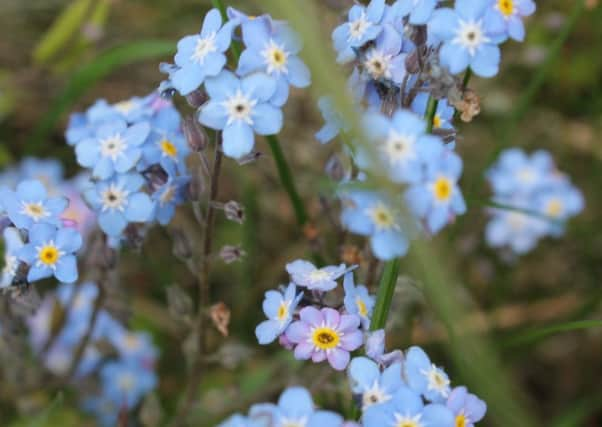Kinds of blue that thrive into summer


It spreads quickly by seed, but should start to get a bit too invasive, just pull it up – which makes this spring bloomer a not-unwelcome guest in many shadier parts of the garden.
Myosotis isn’t just a free-growing annual; it also comes in biennial and perennial forms ideal for underplanting or edging beds and borders. Alternatively, try growing it in a container or hanging-basket.
Advertisement
Hide AdAdvertisement
Hide AdIn the wild, it loves damp spots such as streamsides where the perennial form will take root and spread, flowering profusely from May to July or even later.
It’s a hardy little plant, which explains why it’s so successful, both in and out of the garden.
Although Myosotis is easy to identify, there is another delicate and tiny blue-flowering perennial plant which is often mistaken for it. Germander speedwell, aka Veronica chamaedrys, is at home over most of Britain, be it in woods, fields or alongside roads. Its blooms are a deeper blue than those of the forget-me-not and usually have four, not five, petals.
Country folk tend to call it “Cat’s eye” and it is usually at its best in May and June.
Advertisement
Hide AdAdvertisement
Hide AdAnother little beauty that is hard to forget and which is far less welcome than both forget-me-not and speedwell, is also making its presence felt.
It’s called Herb Robert, or Geranium robertianum, and its dark green/red leaves and pretty pink flowers have become part of the English garden – and countryside, where it’s found in the wild in hedgerows, woods, grasslands and walls, where it can take root in the tiniest crevice.
Its name comes from the Greek “geranu”, meaning crane, because of the crane beak-like seedheads. In some parts of the world, it is classed a as a noxious weed and once you let it flower and set seed, it will appear year after year.
It has the ability to colonise the smallest piece of open soil, so regular hoeing is a good way to stop it spreading to cleared land. However, in planted beds and borders the only way to remove it effectively is by hand.